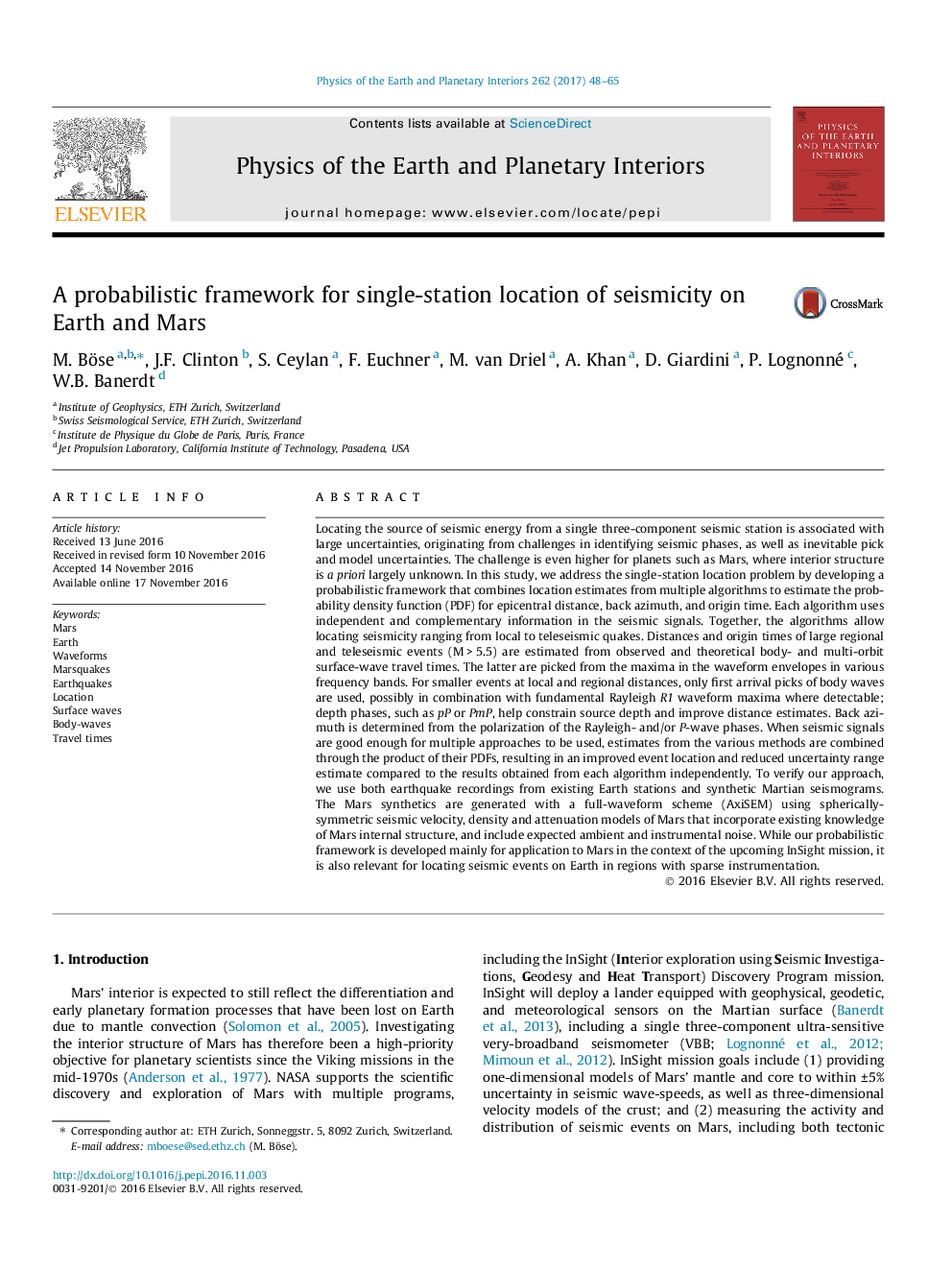| کد مقاله | کد نشریه | سال انتشار | مقاله انگلیسی | نسخه تمام متن |
|---|---|---|---|---|
| 5787411 | 1641478 | 2017 | 18 صفحه PDF | دانلود رایگان |
- Seismic event location from single three-component seismic station.
- Approach combines various algorithms based on surface- and body-wave arrivals and polarization.
- Consideration of both data and model uncertainties.
- Demonstration for earth- and (synthetic) marsquakes at local to teleseismic distances.
Locating the source of seismic energy from a single three-component seismic station is associated with large uncertainties, originating from challenges in identifying seismic phases, as well as inevitable pick and model uncertainties. The challenge is even higher for planets such as Mars, where interior structure is a priori largely unknown. In this study, we address the single-station location problem by developing a probabilistic framework that combines location estimates from multiple algorithms to estimate the probability density function (PDF) for epicentral distance, back azimuth, and origin time. Each algorithm uses independent and complementary information in the seismic signals. Together, the algorithms allow locating seismicity ranging from local to teleseismic quakes. Distances and origin times of large regional and teleseismic events (MÂ >Â 5.5) are estimated from observed and theoretical body- and multi-orbit surface-wave travel times. The latter are picked from the maxima in the waveform envelopes in various frequency bands. For smaller events at local and regional distances, only first arrival picks of body waves are used, possibly in combination with fundamental Rayleigh R1 waveform maxima where detectable; depth phases, such as pP or PmP, help constrain source depth and improve distance estimates. Back azimuth is determined from the polarization of the Rayleigh- and/or P-wave phases. When seismic signals are good enough for multiple approaches to be used, estimates from the various methods are combined through the product of their PDFs, resulting in an improved event location and reduced uncertainty range estimate compared to the results obtained from each algorithm independently. To verify our approach, we use both earthquake recordings from existing Earth stations and synthetic Martian seismograms. The Mars synthetics are generated with a full-waveform scheme (AxiSEM) using spherically-symmetric seismic velocity, density and attenuation models of Mars that incorporate existing knowledge of Mars internal structure, and include expected ambient and instrumental noise. While our probabilistic framework is developed mainly for application to Mars in the context of the upcoming InSight mission, it is also relevant for locating seismic events on Earth in regions with sparse instrumentation.
Journal: Physics of the Earth and Planetary Interiors - Volume 262, January 2017, Pages 48-65
